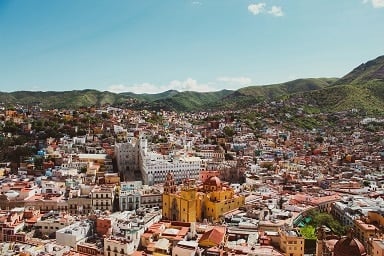The U.S. State Department issued its strongest possible “do not travel” warning for several Mexican states because of “crime and kidnapping.”
The U.S. travel warning describes violent crime – such as homicide, kidnapping, carjacking, and robbery – as being widespread and common in Mexico since October of last year. The U.S. government has limited ability to provide emergency services to U.S. citizens in many areas of Mexico, as travel by U.S. government employees to certain areas is prohibited or restricted. In many states, local emergency services are limited outside the state capital or major cities.
Parents of students planning to ditch the books and hit the beaches of Mexico for spring break are being warned to change their vacation plans now and stop their kids from crossing the border due to major safety concerns. Solo female travelers are especially advised to exercise increased caution in Mexico.
The popular tourist state of Quintana Roo once considered extremely safe, which includes Cancun, Playa Del Carmen, and Tulum, has been slapped with an “exercise increased caution” warning. 30 of Mexico’s 32 states have been flagged with warnings to travelers.
U.S. officials are warning that some resorts which had long been considered as being in safe areas are now being controlled by the Mexican drug cartels.
These cartels are not only selling drugs including deadly fentanyl to tourists but also using the resorts as money laundering facilities. “There is a cartel presence in these resorts,” said Robert Almonte, a former U.S. Marshal in the western district of Texas.
U.S. citizens are advised to adhere to restrictions on U.S. government employee travel. State-specific restrictions are included in the individual state advisories below. U.S. government employees may not travel between cities after dark, may not hail taxis on the street, and must rely on dispatched vehicles, including app-based services like Uber, and regulated taxi stands. U.S. government employees should avoid traveling alone, especially in remote areas. U.S. government employees may not drive from the U.S.-Mexico border to or from the interior parts of Mexico, except daytime travel within Baja California and between Nogales and Hermosillo on Mexican Federal Highway 15D, and between Nuevo Laredo and Monterrey on Highway 85D.
Mexican travel expert Janet Sanders speaks from first-hand experience about the dangers of Mexican travel. The Colorado businesswoman and her husband were terrorized, held captive, and nearly killed by machete-wielding, gun-toting thugs who destroyed their belongings, killed their dogs, and more in the formerly safe resort city of Puerto Vallarta, before they were able to escape back to the United States earlier this year.
In that city, the U.S. Treasury Department is pursuing the case of Sergio Armando Orozco Rodriguez, also known as Puerto Vallarta cartel kingpin “Chocho” who extorts businesses for protection money in his hometown and launders drug proceeds through ties to nightclubs and restaurants along the city’s picturesque boardwalk.





